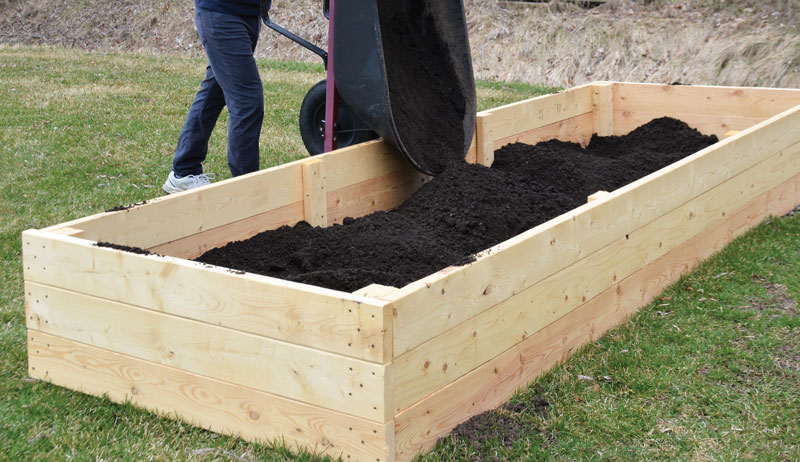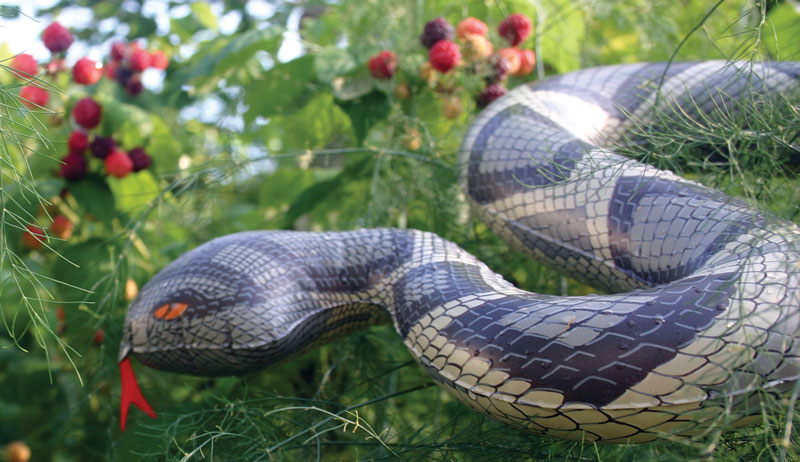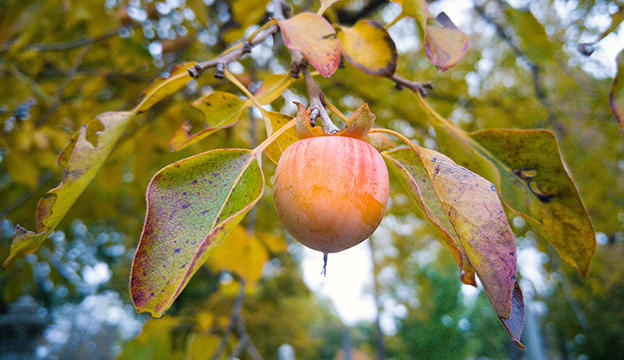
Small farming, whether in the country or the suburbs, is a year-round adventure. There’s lots to do, from planting crops to building a compost pile to feeding the small flock of chickens in the backyard.
Use these tips and tricks to get the most out of your garden in each season.
Spring Suggestions
There’s more to this season than just planting a garden.
Herbs
Most gardeners cut back perennial garden plants in the winter season. Don’t do that with culinary herbs. You could kill them.
Rather, cut them back in mid-spring. Most culinary herbs evolved in the Mediterranean region, where the mild winters didn’t teach them how to go dormant. Cutting them in fall or winter could provoke them to make new growth during warm spells.
The new growth can then get killed by a cold snap.
Wait for winter to pass, then give them an herbal ’aircut. Culinary herbs from the Mediterranean include bay, sage, rosemary, lavender, thyme, oregano, marjoram, parsley, cilantro and chives.
Tomatoes
Tomatoes need attendants in the form of a trellis. For Roma tomatoes and other determinate, short varieties, I use 6-foot lengths of rebar as stakes set in line between each plant. I then make sort of a cat’s cradle of jute string to hold them up.
When the plants are about 1 foot tall, tie the string to the first stake about 8 inches above the ground. Then loop it around each stake as you go up the row.
At the far stake, come back down the other side of the row, looping around each stake. Then tie the string off at the same stake where you began. The string will hold the plant up.
As it gets taller, run another line of string to hold it up every five days or so. You’ll have a sturdy trellis that doesn’t impede harvesting.
For indeterminate tomatoes, you’ll need a different system. I buy a roll of concrete reinforcing wire mesh from a building-supply business. This I roll out on my driveway and cut out 5 1⁄2-foot sections with a bolt cutter.
I roll it up into a tube and fold over the cut ends of the mesh to hold its form. This creates a tomato cage 18 inches in diameter and 5 feet in height. Attach it to a stake so it doesn’t blow over and you’ve got a good-looking trellis that can store outdoors with 6-by-6-inch openings for pulling tomatoes.
One roll of this mesh is very heavy and makes about 25 trellises. So this may be a good group project for a community garden.
If you’re a market gardener, you may want to sell a bunch in the spring. I normally sell about 100 cages each year, many to previous customers.
Read more: Grape tomatoes get the job done in the garden.
Weeds
Spring is weed season in the garden. But wait! A lot of those weeds are tasty, wild, edible vegetables. Keep an eye out for:
- chickweed
- sour grass
- onion grass
- burdock
- dandelion
- lamb’s-quarter
- pokeweed
- purslane
- sheep sorrel
Even if you did get your mulch spread over the winter, some of these will come up in paths, lawns, vegetable beds and other unmulched places. When you pick and prepare them, they are tasty and more nutritious than many cultivated vegetables.
Many people use chickweed as a winter substitute for basil in pesto. Purslane makes great pickles. Sour grass and sheep sorrel add the taste of lemon to sandwiches and salads.
Pick up a copy of Scout’s Guide to Wild Edibles, Backyard Forager or anything by Sam Thayer to get up to speed on all the free gourmet food you’ve been tossing in the compost or feeding to the chickens.
Syrup
Have you ever wished you could tap some sugar maples for sap and cook it down to delicious syrup? You can tap sap, and you don’t need to be in New England or the upper Midwest. You don’t need sugar maples either!
If you have any tree in the maple family or a native nut tree, you can tap them in winter for sap. Tappable trees include:
- red maple
- silver maple
- big-leaf maple
- box elder
- black walnut
- hickory
- pecan
The reason you haven’t heard of people tapping these trees is that these species don’t produce a commercially viable sap.
However, they’re plenty good as a backyard sugar bush using the same tools and techniques. The farther south you go, the timing becomes trickier. So you may have to engage in trial and error on several trees at different times to understand your local conditions.
Summer Solutions
The sun is shining, and no cold snaps are on the horizon. This is the season to get to work in the garden!
Raised Beds
The concept of using raised beds for growing vegetables developed in northern European regions with high rainfall in spring. Raised beds drain faster, and baby vegetables get more oxygen from the soil than plants in ground-level beds.
But there’s a trade-off in summer.
Raised beds in dry areas or in the dry season (such as summer) can leave your garden vegetables feeling very thirsty. So invest in mulch, soaker hoses and a timer to make sure that your summer vegetable garden is growing every day.
I recommend a 2-inch layer of mulch in perennial beds. But for annual vegetable beds that will get turned over, 1 inch is plenty. 
Use shredded leaves, fine pine bark or coffee chaff (free from local coffee roasters). A good rule of thumb is that a raised bed in summer will need about 1 gallon of water per square foot per week if it doesn’t rain. So, a 4-by-12-foot raised bed will need about 48 gallons per week.
That’s about the same amount as a 50-gallon rain barrel will provide at one go.
Rain Barrels
Many people use repurposed plastic pickle barrels as rain barrels.
They’re the best option, in my opinion. I use a 300-gallon horse trough or a 275-gallon plastic international beverage container that has held food-grade liquids and can be found online (e.g., craigslist.com).
Connect either one to a downspout diverter from Gardener’s Supply. You’ll have lots of water for your raised beds in summer.
Bonus: The horse trough also serves as an aboveground water garden with mosquito-eating goldfish and aquatic plants (and marginal aquatic plants such as cardinal flower) that also attract hummingbirds and singing tree frogs.
Fruit
We all love fruit trees in summer. And birds love fruit especially. But resist the temptation to use netting to dissuade the birds. The stuff is a pain to work around when you want to harvest fruit every other day.
Plus, birds have a bad habit of getting their feet caught in them and then dying of thirst, which is not pretty.
It’s better to use inflatable snakes to deter birds. These are about 3-foot long, curly enough to hang on limbs and lifelike enough to deter birds. The key is to only put them out once the fruit is ripe. And then to move them every other day (the same ideal schedule for harvesting tree fruit) so the birds don’t start to think they are dead. 
If you have a big tree, you’ll need more than one snake.
In my experience, snakes work great with all fruits except blueberries. For those, drive a few pieces of rebar into the ground that are taller than the shrubs. Then tie off and twist some Mylar ribbons over the blueberries. The flashing of light reminds birds of light flashing off the eyes of predator birds such as hawks.
Compost
You can have prime compost with no smells, no turning and no mess. And you just need a few simple things:
- two well-made compost bins
- a piece of hardware cloth to put under each one to keep out critters
- a dry supply of brown material nearby (tree leaves or coffee chaff work best; keep it in a repurposed garbage can with a short-handled shovel inside)
- a small nursery pot nearby with a trowel and dark-brown garden soil or compost as a source of microbes to add periodically to the bin
Dump kitchen scraps and garden scraps in the first bin. Sprinkle a bit of soil to add microbes, and cover lightly with brown material. Repeat until fall. Then do the same process with the second bin.
By the spring season, the first bin will have composted without needing to be turned, so just spread it in the garden and start dumping scraps there. By the fall season, the second bin will be ready to empty onto the garden.
Alternate emptying one in spring and one in fall.
Read more: You can start composting today! Here’s how.
Grass Clippings
Don’t bag up all your lawn clippings. Leaving grass clippings on the lawn feeds the soil microbes and fertilizes the lawn. It doesn’t promote thatch or anything else bad.
But I do always fill up one bag with clippings and dump it in the pen for my hens. They love fresh greens. Plus, some bugs and seeds will likely be in there for them to find.
Fall Crops
The time to plant fall crops is actually at the end of summer. If you wait until fall, it will be too cool, and your vegetables won’t have enough warmth to put on size before it gets cold and they stop growing almost entirely.
Plants are sort of like cold-blooded animals. Their metabolisms can only grow at the speed of temperature of the air and soil.
In zone 7 of North Carolina where I live, we plant fall crops around Labor Day, at the tail end of our hot summers. They need that last month of warm weather to grow quickly. We get broccoli by Christmas or New Year’s Day when we plant them soon enough.
If we waited any later, we may not harvest any heads until Groundhog Day!
Autumn Answers
During fall, there’s still much to do, include more planting, gathering compost material and more.
Persimmons
The native persimmon is a favorite, but you need to get acquainted with its ways. Just because the fruit has fallen doesn’t mean it’s ripe enough to eat. If the skin looks tight and smooth, they’re still unripe and will cause your mouth to pucker up severely if you take a bite.
Persimmons are ripe when they look like an overripe fruit that you would never buy if you saw it at the grocery store: wrinkled and soft. That’s what a delicious, sweet persimmon looks like.
Perennials
Fall is a great season for planting perennial garden vegetables, perennial flowers, shrubs and fruit trees. Even with cold weather coming, the ground will be warmer than the air. So roots can actively grow while it’s nearly freezing aboveground.
Planting after summer passes means that the roots have all fall, winter and spring to grow before they have to contend with the heat and dryness of summer.
Leaves
Fallen leaves are a great resource for the thoughtful gardener.
I really don’t know why so many folks invest so much time and money in bagging them up, sending them off to the landfill and then buying expensive mulch.
Leaves on the lawn can be shredded and bagged with a mower and spread at the base of trees or in perennial beds or vegetable beds for mulch. They’re also valuable for adding to compost or using as free bedding in the chicken coop.
Leaves that fall into a perennial bed can be lightly covered with a thin layer of pine needles. They look better and keep leaves from blowing around.
Splitting Perennials
Lots of perennials will be setting seed. Now is a good time to gather them and toss them where you want more plants. These are some of the perennials that I spread around the garden and share with friends:
- Formosa lily
- Lenten rose
- blackberry lily
- poet’s laurel
- poppies
- love-in-a-mist
- parsley
- cilantro
- cleome
- columbine
Frost
I think most gardeners worry too much about potential damage from a first frost. It’s the second frost a few weeks later that will be a killing frost.
But there is something easy you can do to protect plants from frost. Just water them.
If there’s plenty of moisture in the garden soil, the roots will stay warmer. And if your plants can absorb plenty of water, they can use it to make their own natural antifreeze to protect themselves from frost.
Read more: Protect your unplanted trees and shrubs from frost with these tips.
Winter Musts
Cold weather, snow, ice, etc. don’t shut down a farm. There is still so much you can do to improve and enhance your homestead.
Mulch
Mulch is like birth control for weeds, which means it works best when used consistently and at the right time. Most weeds generate seeds in the summer and fall, and most of those weeds are tiny.
That means they needs sunlight to germinate.
Two inches of mulch will block that light and keep them dormant—a barrier method, if you will.
A brick is 2-inch thick and will serve as a handy gauge. In my zone 7 garden, I spread mulch between Christmas and Valentine’s Day, after herbaceous plants have gone dormant and before most bulbs come up. It leaving lots of elbow room for working.
In snowbound regions, spread mulch at the end of fall or the beginning of spring.
Prune Trees
Prune fruit trees during cold months. Learn to cut branches back to what’s called the branch collar, so they heal over well.
Bypass-style pruners and loppers will give you the cleanest cuts. And a folding pruning saw to help cut limbs to length.
If you heat with wood, save the trimmings for next year’s kindling.
Wood Ash
If you do heat with wood, don’t throw wood ash away. Some parts of the garden benefit from annual applications of wood ash to keep the pH high: culinary herb gardens, asparagus beds, vegetable gardens and Mediterranean fruit trees such as figs.
Ash can even be spread over the snow so that it sifts into the soil. Wood ash is only a third as strong as lime, so it’s unlikely you’ll apply too much.
Leftover Bulbs
Do you still have fall bulbs left over that didn’t make their way into the ground? Winter isn’t too late for planting bulbs.
If they get enough cold exposure, they’ll still flower in spring. If not, they’ll wait patiently for next year.
All bulbs want to be planted at a depth of about three times their width (same as with seeds). With a shovel, I dig one hole the right depth. Then, from a standing position, I toss in two to five bulbs and cover them up. I don’t worry about whether they are right side up or not.
When they come out of dormancy, they’ll be aware of gravity and send their shoots and roots in the exact right direction even if they are upside down. Nature is sturdy.
Cutbacks
Before the end of winter, cut back any ornamental grasses and other dormant herbaceous plants that you didn’t cut back earlier. Some grasses look fine with last year’s leaves in place, but some look better with the old grass removed. That’s mostly an aesthetic choice.
With ornamental grasses I use a hedge clipper and start snipping away a couple inches at the top and work my way down. That way, the clippings are small and can rest on the ground to decompose and I don’t have to haul them away.
You can also do this at the end of fall before spreading mulch.
Plant Early
Some spring vegetables do best when planted before spring actually begins: peas, potatoes, greens and all the cole crops (broccoli, cauliflower, brussels sprouts, cabbage). Your local garden center will know the best weeks in the season for early plantings for your region.
Potatoes will sprout sooner and with less effort if you use whole potatoes that are about the size of a chicken egg rather than quartering large potatoes and waiting for their skin to heal over.
Peas will produce their own fertilizer if you inoculate them with bacteria that draws nitrogen from the air. This article appeared in Hobby Farm‘s Urban Farm 2021 annual, a specialty publication produced by the editors and writers of Hobby Farms magazine. You can purchase this volume, Hobby Farms back issues as well as special editions such asBest of Hobby Farms and Living off the Grid by following this link.




